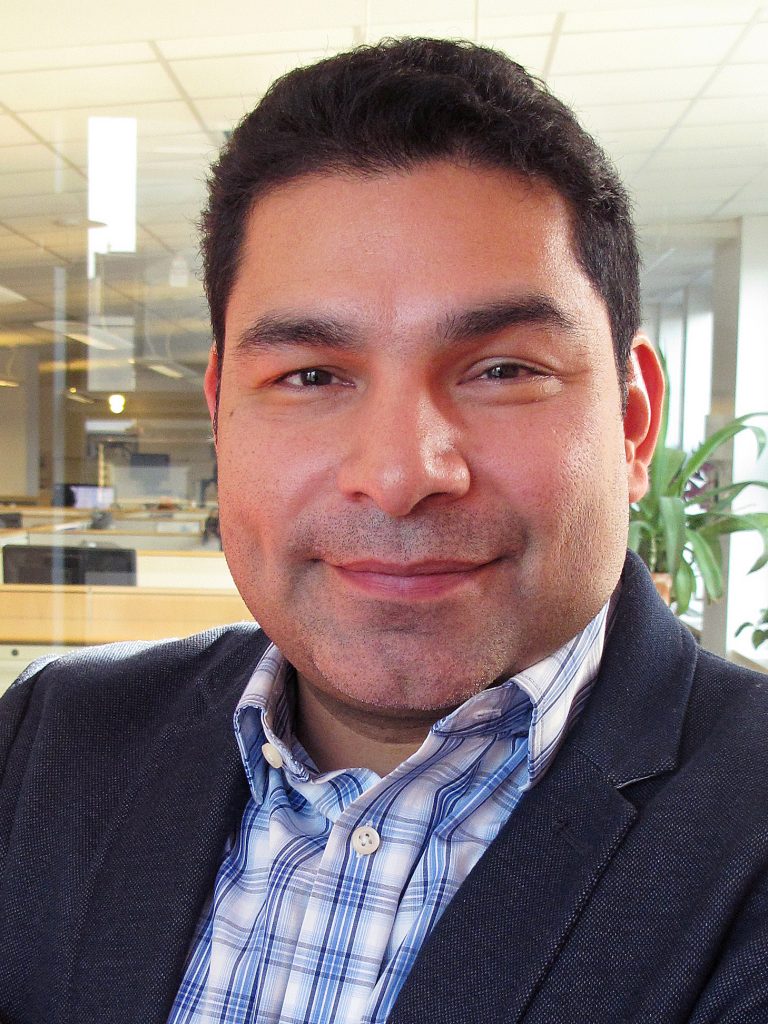Meet ILFI’s new Board Chair, Anthony Guerrero

In February of this year, Development Manager Liz Harder had a chance to talk with ILFI’s New Board Chair, Anthony Guerrero. Get to know Anthony, his vision for the organization, how the CEO search is going, and what he does on his days off.
Liz Harder (LH): What inspired you to initially join ILFI’s Board of Directors?
Anthony Guerrero (AG): I joined the Living Future Board of Directors in 2016 after learning about the holistic nature of ILFI’s programs. The great work ILFI was doing to create an ecosystem of initiatives that touch everything from affordable housing to building products made me want to be part of the journey ILFI is on. At the time, I had led two green building projects for the Natural Resources Defense Council (NRDC), where I now serve as Chief Real Estate and Sustainability Officer. These projects were incredibly progressive at the time, but we were still challenging ourselves to use only the healthiest building materials in our buildings; we needed a stronger protocol for materials vetting. At this point, we learned about the Living Building Challenge, with its multifaceted approach to green building design, and didn’t look back. We’ve converted all of our buildings and operations (including seven main offices globally, approximately 700 staff and 200,000 square feet of office spaces) to follow the Living Future’s holistic spirit of sustainability.
LH: What sets your leadership apart from others working in environmental sustainability?
AG: I’m a big picture thinker and love looking at things from a holistic, operational perspective. This means I also tend to empower teams to collaborate, take risks, and be in a safe community together. Crucially, my leadership is also unique because of my perspective as a person of color working in sustainability spaces. We lose important perspectives in a sea of white voices and need to focus more on cultivating a diverse and inclusive workforce, as well as a diversity of thought.
LH: Speaking of leadership, can you give us an update on ILFI’s search for a new CEO? What are some of the key attributes of our next leader?
AG: Absolutely. We’ve selected Kittleman & Associates as our executive search firm. Meanwhile, we’ll be looking for an interim CEO to lead our efforts during this transition. I’m excited to be working with our new board Vice Chair Paolo Bevilacqua, other search committee members Elizabeth Heider, Jason McLennan, Margaret Montgomery, and Tom Bland, as well as some of the ILFI leadership team. We’ll be conducting staff interviews to get a better idea of the type of leader that ILFI team members find effective. We’ll be looking to identify what the best attributes of our next leader will be. My personal take: ILFI needs a leader with nonprofit and business experience, the ability to create a culture of empowerment on staff, and strong ties to our community.
LH: With a new leader, where do you see ILFI in a year? What excites you about the direction we are going?
AG: ILFI’s ideas are so important because we lead by example. We continue to roll out new, sometimes radical sustainability initiatives into an ecosystem of human-centered certification standards. We might not see the impact of this immediately, but it’s clear from how much the market has shifted in the past ten years that what we do is working. We’re a small organization transitioning for growth, and I’m personally excited to work with the depth of resources on the board and bring my strengths, as well help govern during these changes, then stepping back and removing obstacles for our staff to galvanize this growth.
LH: Of the core tenets of ILFI’s mission (socially just, culturally rich, & ecologically restorative), which resonates with you most?
AG: Honestly, all of them. What I like best about ILFI’s mission is that it doesn’t explicitly state that we offer certification standards, but instead states our bigger aspirations.
LH: There are many organizations working on green building–what do you see as ILFI’s niche?
AG: Our niche is that we are not just a certification standard. Some organizations might be crippled by that being their only operation, but we’re propelled by our holistic approach. Like I said, we’re in this for aspirational reasons, which allows us to do more. We can talk about advocacy, we can talk about diversity and inclusion, we can talk about gender. It’s empowering.
LH: What do you see as the big opportunities in front of us, given the urgency of challenges facing society?
AG: Our biggest opportunity is focusing on climate adaptation and resiliency. There’s no denying our world has warmed to the point where we have no choice but to design around these changes. We also need to consider opportunities to alleviate suffering on communities most impacted by climate change–those who have lost homes to wildfires, or who lack access to clean drinking water. We have an opportunity to further lead by example and show this industry what good looks like.
LH: You have been involved in five Living Building Challenge projects. What was this experience like?
AG: Being involved in LBC projects has resulted in a complete systems-thinking change at NRDC. We continue to optimize our operations so that we’re always thinking in the spirit of the Living Building Challenge long after construction is complete. In other words, certain tenets of the LBC are now second nature to us. For example, every product we purchase and introduce to our offices has to be vetted for materials health: we will only introduce products that are proven safe for an indoor environment. Having gone through the LBC, we know that the choices we make in design will impact people for a lifetime–there are no cutting corners.
LH: You led the first tenant improvement project to earn Living Building Certification. Given how many buildings are in need of retrofits, what did you learn that might apply to work on existing buildings?
AG: Focusing on existing buildings is crucial–a large percentage of the problems in the built environment come from existing buildings, and we can’t afford the waste of tearing down buildings just to rebuild. Again, we need to keep in mind the bigger picture. Even if you’re not doing any new construction or renovating, how can you use the spirit of the LBC to make incremental positive changes? Look at your heating/cooling systems, look at the materials you’re using–there are opportunities for improvement at every turn.
LH: Finally, what do you do for fun on a day off?
AG: I have two sixteen-year-olds, love movies, and actually fly gliders (sail planes). I belong to a club here in New York, a Valley Soaring Club (VSC), and get the opportunity to take a few gliders out for flights.
***
Thank you, Anthony, for your time and fearless leadership through this transition!


